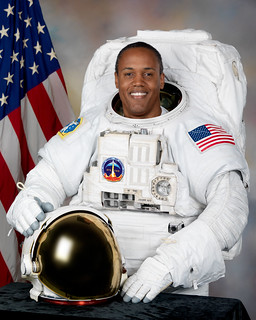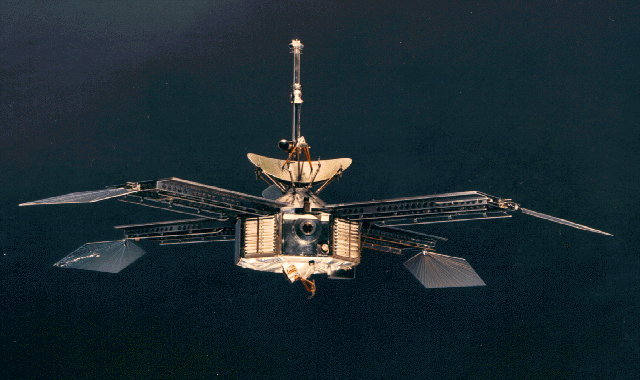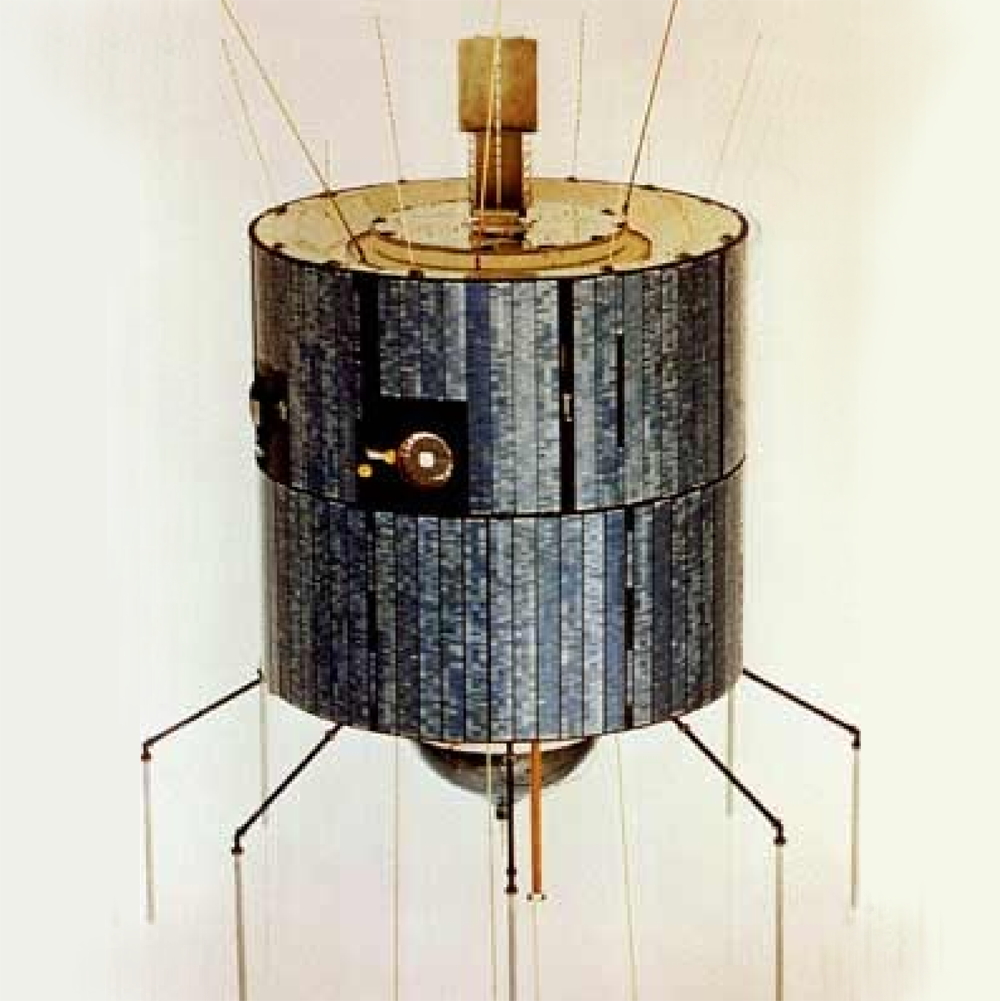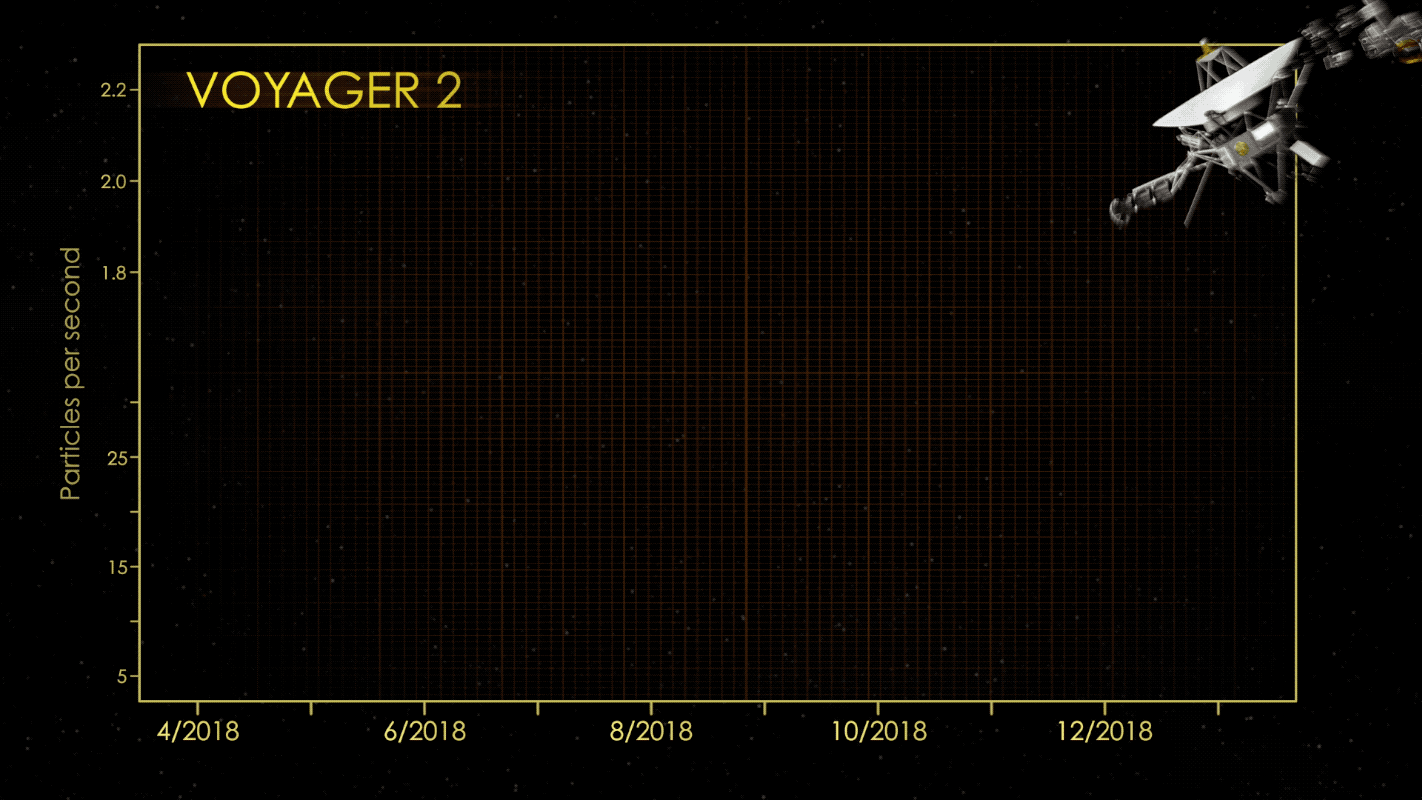If you are not already a subscriber, you are welcome to enter your email address here to sign up to receive the Space History newsletter on a daily basis. Under no circumstances will we release your legitimate email address entered here to outside persons or organizations, and it will only be used for mailing the specific information you have requested.
| Enter your email address here: |
Unsubscribe instructions are included in every newsletter issue in case you decide you no longer wish to receive it.
Note: We record the IP address from which subscriptions are entered to help prevent SPAM abuses.
Race To Space
Someone will win the prize...
... but at what cost?
Visit RaceToSpaceProject.com
to find out more!
1855
Born, Leon Philippe Teisserenc de Bort, French meteorologist (stratosphere)
ref: en.wikipedia.org
1872
Paul Henry discovered asteroid #126 Velleda; Prosper Henry discovered asteroid #127 Johanna.
1877
Paul Henry discovered asteroid #177 Irma.
1879
Died, James Clerk Maxwell, physicist (electromagnetic theory), generally regarded as the nineteenth century scientist who had the greatest influence on twentieth century physics, making contributions to the fundamental models of nature
ref: en.wikipedia.org
1901
M. Wolf and A. Kopff discovered asteroid #692 Hippodamia.
1906
Born, Fred Whipple, astronomer (comet research), invented the Whipple Shield, a thin metal outer skin for spacecraft to prevent catastrophic damage from meteors
Fred Lawrence Whipple (5 November 1906 - 30 August 2004), the oldest living American astronomer at the time of his death, and one of the last giants of twentieth century astronomy, passed away at the age of 97 following a prolonged illness. A discoverer of six comets, Whipple may be best known for his comet research. In 1950, he first suggested that comets were "icy conglomerates," what the press called "dirty snowballs." His dirty snowball theory caught the imagination of the public even as it revolutionized comet science.
Mindful of the damage to spacecraft from meteors, in 1946 he invented the Meteor Bumper, a thin outer skin of metal. Also known as the Whipple Shield, this mechanism explodes a meteor on contact, preventing the spacecraft from receiving catastrophic damage. Improved versions of it are still in use, including on the Stardust spacecraft, which protected the vehicle during its Comet Wild 2 encounter on 2 January 2004.
ref: ui.adsabs.harvard.edu
1911
Calbraith Rodgers arrived in Pasadena, completing the first transcontinental airplane flight across the USA, which lasted 49 days, having left Sheepshead Bay, New York, on September 17.
ref: en.wikipedia.org
1916
Born, Nikolai Nikolayevich Sheremetyevskiy, Chief Designer of USSR's Iosifyan design bureau (1974-1991), specialized in power sources and Earth survey satellites
ref: www.astronautix.com
1921
S. Beljavskij discovered asteroids #969 Leocadia and #3134 Kostinsky.
1928
J. Comas Sola discovered asteroid #1102 Pepita.
1948
Born, Robert Joseph Cenker (at Uniontown, Pennsylvania, USA), NASA payload specialist astronaut (STS 61-C; over 6d 2h in spaceflight)

Astronaut Robert Cenker, NASA photo
Source: Wikipedia (www.jsc.nasa.gov unavailable November 2019)
ref: en.wikipedia.org
1959 17:39:00 GMT
NASA/USAF launched X-15A test mission # 4. Scott Crossfield reached 660 mph (1062 kph, Mach 1.00) and 45,460 ft (13.857 km, 8.610 mi), had an engine fire/explosion, fuselage structural failure on landing. The X-15 returned to North American for rebuild.
ref: en.wikipedia.org
1961
Born, Charles Owen Hobaugh (at Bar Harbor, Maine, USA), Colonel USMC, NASA astronaut (STS 104, STS 118, STS 129; over 36d 7.75h total time in spaceflight)

Astronaut Charles O. Hobaugh, STS-118 pilot, NASA photo (28 Nov. 2006)
Source: Wikipedia (spaceflight.nasa.gov killed 25 Feb 2021)
ref: en.wikipedia.org
1962
Born, B. Alvin Drew (at Washington, DC, USA), Lt Colonel USAF, NASA astronaut (STS 118, STS 133; nearly 25d 13h total time in spaceflight)

Astronaut B. Alvin Drew Jr., STS-133 mission specialist, NASA photo JSC2010-E-166278 (1 July 2010)
Source: NASA Johnson Photostream
ref: en.wikipedia.org
1964 10:22:05 GMT
NASA launched Mariner 3 as an attempted Mars flyby, but no data returned when the probe failed to achieve a Mars trajectory due to a protective shield not being ejected.

Mariner spacecraft, NASA photo
Source: NSSDCA Master Catalog
Mariner 3, launched 5 November 1964, was a 260 kg solar-cell and battery-powered spacecraft designed to make scientific measurements in the vicinity of Mars and to obtain photographs of the planet's surface and transmit these to Earth. It was intended that the spacecraft would encounter Mars after a 325-million mile journey in a little less than 8 months. A protective shield failed to eject after the spacecraft had passed through the atmosphere. None of the instrument sensors were uncovered, and the added weight prevented the spacecraft from attaining its prescribed Mars trajectory.
The experimental payload included six sensors. A solar probe was designed to measure the charged particles making up the solar wind. A trapped-radiation detector was included to measure the Van Allen belts of Earth, similar formations around Mars, and related phenomena in space. The ionization chamber and Geiger-Mueller tube were intended to measure the ionization caused by charged particles and to determine the number of particles. A cosmic-ray telescope was mounted on the shadowed side of the spacecraft to detect protons in three energy ranges. A helium magnetometer was mounted high on the spacecraft's low-gain antenna boom to minimize the effect of spacecraft fields. A cosmic dust detector completed the experiment package, consisting of an aluminum plate perpendicular to the spacecraft vector velocity. Two surface penetration detectors and a microphone attached to the plate were used to indicate the momentum, direction, and number of hits.
Electrical power for all experiments and spacecraft functions was provided by 28,244 solar cells mounted on four collapsed panels designed to deploy in flight. The cells provided 700 W of electrical power, which was converted into various forms to run the spacecraft and recharge the battery. At Mars distance, it would still generate 300 W, which was a safe margin for the payload.
ref: nssdc.gsfc.nasa.gov
1967 23:31:00 GMT
NASA GSF launched ATS 3 to take the first pictures of the full Earth disk and perform other tests to determine what could be done by a geosynchronous satellite.

NASA ATS 3 (Applications Technology Satellite), NASA photo
Source: NSSDCA Master Catalog
ATS 3 (Applications Technology Satellite), launched 5 November 1967, was one of a series of spacecraft designed to demonstrate the utility and feasibility of a variety of technological and scientific activities that could be carried out by an Earth-synchronous spacecraft. Of the 11 experiments on board, 8 were technological engineering experiments concerned with navigation, communications, and spacecraft operation and equipment. Two of the remaining experiments were photographic imaging experiments that could produce near real-time daylight pictures of the Earth-atmosphere system. The remaining experiment was an ionospheric beacon. The cylindrically shaped spin-stabilized spacecraft was 180 cm in length and 142 cm in diameter. The primary structural members were a honeycombed equipment shelf and thrust tube. Support rods extended radially outward from the thrust tube and were affixed to solar panels which formed the outer walls of the spacecraft. Equipment and payload components were mounted in the annular space between the thrust tube and solar panels. In addition to solar panels, the spacecraft was equipped with two rechargeable nickel-cadmium batteries to provide electrical power. Eight 150-cm VHF experiment whip antennae were mounted around the aft end of the spacecraft, while eight telemetry and command whip antennae were placed on the forward end. Spacecraft guidance and orbital corrections were accomplished by 2.3-kg hydrogen peroxide and hydrazine thrusters, which were activated by ground command. Initially placed at 48 deg W longitude over the Atlantic Ocean in a geosynchronous orbit, the satellite position later varied between 45 and 95 deg W longitude in support of meteorological operations. The various experiments were generally successful.
ref: nssdc.gsfc.nasa.gov
1971 13:00:00 GMT
The Europa F-11 / STV 4 technology mission was launched from Kourou, but a structural failure of the third stage where guidance signals were reversed prevented it from reaching orbit.
ref: nssdc.gsfc.nasa.gov
1974
The maiden flight of China's FSW (Fanhui Shei Weixing, Recoverable Test Satellite) program ended in failure: The Chang Zheng 2A booster carrying the initial FSW-0 capsule had a cable carrying the pitch rate gyro signal disconnected when it was launched.
ref: space.skyrocket.de
1975
L. Chernykh discovered asteroid #3747.
1983
C. and E. Shoemaker discovered asteroid #3285 Ruth Wolfe; Osservatorio San Vittore discovered asteroid #3744.
1992
Died (age 92), Jan H. Oort, Dutch astronomer (Oort Cloud, Bruce Medalist 1942)
ref: phys-astro.sonoma.edu
1994
The ESA Ulysses ISPM (International Solar Polar Mission) space probe completed the first passage behind the Sun.
The primary objectives of Ulysses, formerly the International Solar Polar Mission (ISPM), were to investigate, as a function of solar latitude, the properties of the solar wind and the interplanetary magnetic field, of galactic cosmic rays and neutral interstellar gas, and to study energetic particle composition and acceleration. The 55 kg payload included two magnetometers, two solar wind plasma instruments, a unified radio/plasma wave instrument, three energetic charged particle instruments, an interstellar neutral gas sensor, a solar X-ray/cosmic gamma-ray burst detector, and a cosmic dust sensor. The communications systems was also used to study the solar corona and to search for gravitational waves. Secondary objectives included interplanetary and planetary physics investigations during the initial Earth-Jupiter phase and investigations in the Jovian magnetosphere.
Ulysses was deployed from NASA's shuttle Discovery during the STS 41 mission on 6 October 1990. On leaving Earth, the spacecraft became the fastest ever artificially accelerated object, by means of two upper stages. The spacecraft used a Jupiter swingby on 8 February 1992 to transfer to a heliospheric orbit with high heliocentric inclination, and passed over the rotational south pole of the Sun in mid-1994 at 2 AU, and over the north pole in mid-1995. A second solar orbit took Ulysses again over the south and north poles in years 2000 and 2001, respectively. The Ulysses mission was extended until 30 June 2009, enabling it to continue operating while flying over the Sun's poles for the third time in 2007 and 2008.
On 1 May 1996, Ulysses unexpectedly crossed the ion tail of Comet Hyakutake (C/1996 B2), revealing the tail to be at least 3.8 AU in length.
The spacecraft was powered by a single radio-isotope generator. It was spin stabilized at a rate of 5 rpm and its high-gain antenna pointed continuously to the Earth, communicating on frequencies of 2111.6073/2293.1481 MHz and 8408.2099 MHz. A nutation anomaly after launch was controlled by CONSCAN.
Ulysses was commanded to switch off its transmitter at 20:15 UTC on 30 June 2009 after 6842 days (18 years 8 months 24 days) in orbit, due to the fact its orbital path was carrying the spacecraft away from Earth, and the ever-widening gap progressively limited the amount of data that could be transmitted.
The original mission planned for two spacecraft, one built by ESA and the other by NASA. NASA cancelled its spacecraft in 1981.
See also:
NASA/JPL Ulysses website
ESA Ulysses website
NASA Planetary Data System
ref: nssdc.gsfc.nasa.gov
1995 06:45:21 EST (GMT -5:00:00)
NASA's STS 73 (Columbia 18, Shuttle 72), landed after carrying the US Microgravity Laboratory-2 (USML-2) experiment platform into orbit.
STS 73 launched 20 October 1995; the successful launch after six scrubs tied STS 73 with STS 61-C for the most launch scrubs of a single mission: The liftoff originally set for 25 September 1995 was scrubbed shortly after tanking began, when a hydrogen leak was detected in the main engine number 1 main fuel valve. The valve was replaced at the pad. The launch was re-set for 5 October, but weather effects due to Hurricane Opal led to the L-1 day decision to postpone the launch one day to 6 October. The 6 October launch attempt was scrubbed prior to external tank loading when it was determined that hydraulic fluid had been inadvertently drained from hydraulic system 1 following the main engine number 1 fuel valve replacement. A compressibility test demonstrated the system was satisfactory for launch, and liftoff was re-set to occur 7 October. The launch attempt on 7 October was scrubbed at T-20 seconds when the Master Events Controller 1 (MEC 1) failed to operate properly and mission managers determined it needed to be replaced. The launch re-set for 14 October was re-scheduled to 15 October to allow additional time to inspect the main engine oxidizer ducts as a result of finding a crack in a test engine oxidizer duct at Stennis. Also during the delay, a faulty general purpose computer 1 (GPC 1) had to be replaced. The launch attempt 15 October was postponed at T-5 minutes due to low clouds and rain. The launch was tentatively re-set to 19 October pending a successful Atlas launch on 18 October; however, the Atlas launch was delayed and the STS 73 was launch moved to 20 October. The countdown to liftoff on 20 October was delayed three minutes due to a range computer glitch, but otherwise proceeded smoothly.
STS 73 marked the second flight of the US Microgravity Laboratory (USML-2) and built on the foundation of its predecessor, which flew on Columbia during STS 50 in 1992. The research during USML-2 concentrated within the same overall areas of USML-1, with many experiments flying for the second time. The crew divided into two teams to work around the clock in the 23 foot (seven meter) long Spacelab module located in Columbia's payload bay.
Research was conducted in five areas: fluid physics, materials science, biotechnology, combustion science, and commercial space processing. USML-2 activities were directed by NASA's Spacelab Mission Operations Control facility at the Marshall Space Flight Center.
The experiments went smoothly. In some cases, results re-confirmed existing theories, while in other cases results were new and unique. Highlights included unprecedented results from the Surface Tension Driven Convection Experiment, which flew for second time and studied in great detail basic fluid mechanics and heat transfer of thermocapillary flows, motions created within fluids by non-uniform heating of their free surfaces. Oscillations observed on USML-2 samples had never been observed on Earth, and researchers controlling the experiment from the ground were able to pinpoint when fluid flows transitioned from stable to unstable. The research has direct applications on Earth, in that unwanted fluid flows during melting and resolidifying can create defects in high-tech crystals, metals, alloys and ceramics.
Flying for first time was the Fiber Supported Droplet Combustion experiment. More than 25 droplets of a variety of fuels were ignited, confirming theories about how fuels burn in microgravity. The results revealed larger droplet extension diameters (the size of a drop as it burns out) than are capable of being studied on Earth, with burning times 10 times longer. The data confirmed scientific predictions about burn rate and the amount of fuel left over after a fire goes out. This will allow investigators to refine theories and possibly develop new ones about byproducts such as soot and smog.
Five small potatoes were grown on-orbit from tubers in the Astroculture plant growth facility. USML-2 marked the final test flight of the Astroculture hardware, with the unit set to become available commercially for sale or lease. Technologies incorporated in the Astroculture hardware design already are finding application on Earth; for example, the technology behind light emitting diodes (LEDs) that provide high levels of light on-orbit with limited electrical power is finding its way into energy-efficient lighting systems for large-scale commercial plant nurseries. The successful on-orbit growth demonstrated Astroculture's usefulness as plant growth facility and showed edible foods could be grown in space.
A record number of Protein Crystal Growth (PCG) samples - around 1,500 - were flown on USML-2 and initial results indicated many had produced crystals which would be further studied after landing. Other crystal growth experiments were equally successful. In the Crystal Growth Furnace, which flew for first time on USML-1, a crystal was grown for the first time as a liquid bridge to minimize contact with container wall, thus decreasing the number of defects in the crystal. Eight semiconductor crystals were grown, also a very thin crystal and two crystals which could lead to products such as computer chips that are faster and use less power than traditional computer chips.
The crew took time out from the Spacelab work to tape the ceremonial first pitch for Game Five of baseball's World Series, marking the first time the thrower was not actually in the ballpark for the pitch.
The Columbia orbiter performed without serious problems, with the only notable glitch being two vernier thruster jets failing off several times throughout the mission; their function was restored by cycling them on and off. Also, an equipment failure at a ground terminal for NASA's Tracking and Data Relay Communications (TDRS) satellites necessitated two extended communications outages between Columbia and Earth in order to perform a repair.
STS 73 ended on 5 November 1995 when Columbia landed on revolution 256 on Runway 33, Kennedy Space Center, Florida, on the first opportunity at KSC. Rollout distance: 9,032 feet (2,753 meters). Rollout time: 55 seconds. Orbit altitude: 150 nautical miles. Orbit inclination: 39 degrees. Mission duration: 15 days, 21 hours, 52 minutes, 28 seconds, making STS 73 the second longest Shuttle flight to date. Miles traveled: 6.6 million.
The flight crew for STS 73 was: Kenneth D. Bowersox, Commander; Kent V. Rominger, Pilot; Kathryn C. Thornton, Payload Commander; Catherine G. Coleman PhD, Mission Specialist; Michael E. Lopez-Alegria, Mission Specialist; Fred W. Leslie PhD, Payload Specialist; Albert Sacco Jr PhD, Payload Specialist.
ref: www.nasa.gov
2018
As NASA's Voyager 2 probe left the heliosphere, its CRS (Cosmic Ray Subsystem) recorded an abrupt change in particle energies.

Voyager 2's Cosmic Ray Subsystem (CRS) data animated to show the abrupt change leaving the heliosphere
Source: NASA's Goddard Space Flight Center, Goddard Media Studios
The Voyager 2 spacecraft, originally planned as Mariner 12 of the Mariner program, was launched on 20 August 1977 on a mission to explore the outer planets of the solar system. It is identical to its sister Voyager program craft, Voyager 1. Voyager 2 followed a somewhat different trajectory during its Saturn encounter, however, bypassing a close encounter with Titan in favor of taking advantage of a gravitational slingshot to travel on to Uranus and Neptune. It became the first probe to visit those two planets.
Voyager 2 was launched from Cape Canaveral, Florida aboard a Titan-Centaur rocket. The closest approach to Jupiter occurred on 9 July 1979. On 25 August 1981, Voyager 2 took pictures of Saturn's moon Titan showing the structure of the moon's atmosphere, and it flew past Saturn at a distance of 63,000 miles (100,000 km). Its closest approach to Uranus was on 24 January 1986, and its closest approach to Neptune occurred on 25 August 1989, after a 12 year, 4 billion mile journey, when it flew over the planet's cloud tops and those of its moon Triton, sending back photographs of 'swamps' from a distance of 5000 km. Voyager 2 imagery returned on 22 August 1989 confirmed the rings around Neptune are complete, although they are much more faint than those of Saturn.
On 5 November 2018, As Voyager 2 probe left the heliosphere, its CRS (Cosmic Ray Subsystem) recorded an abrupt change in particle energies.
Voyager 2 is expected to keep transmitting into the 2030s.
Voyager 2 carries with it a golden record (Voyager Golden Record) that contains pictures and sounds of Earth, along with symbolic directions for playing the record. The contents of this record were selected by a committee chaired by Carl Sagan.
As of 24 August 2003, Voyager 2 was at a distance of 10.6 billion kilometers (71 AU) and was escaping the solar system, diving below the ecliptic plane at an angle of about 48 degrees and at a speed of about 3.3 AU per year (ca. 15 km/s, 470 million kilometers (about 290 million miles) a year). On 8 July 2018 it was more than 17.65 billion km (10.97 billion miles, nearly 118 AU) from the Sun. (See Where Are The Voyagers Now? for distance, speed, and other interesting information.) It will be approximately 40,000 years before Voyager 2 approaches another planetary system.
See also NSSDCA Master Catalog
See also Wikipedia
ref: voyager.jpl.nasa.gov
We are going to run out of oil!
Visit SpacePowerNow.org
to help fix the problem.
SpacePowerNow.org - For Human Survival
This newsletter and its contents are Copyright © 2006-2025 by The L5 Development Group. All rights reserved. - Publication, in part or in whole, requires previous written permission. - Academic or personal-use citations must refer to http://L5Development.com as their source. Thank you for your cooperation.
Space History Department
Resources
The L5 Development Group Home Page
The L5 Development Group Keyword Access System
Space History for November 5 /
Webmaster /
Script last modified August 23, 2018 @ 6:05 am
Copyright © 2006-2025 by The L5 Development Group. All rights reserved.
Hosted by FKEinternet



